“Voluntary Denied Boarding” is the official term for “bumping” a passenger off a flight. It’s the dreaded or glorious, depending on your plans, moment when an airline asks for volunteers to skip their flight. Airlines attempt to make it worthwhile to delay your plans by offering you gift cards, vouchers, etc – whatever it takes. Offers go as high as $10,000 for taking a later flight, though that’s a one-time outlier. Offers go as low as having police drag you off a plane, bloody and unconscious; that too is rare.
After the “Dao incident” airlines supposedly increased passenger compensation for bumps, looking to avoid that kind of bad publicity. I have no information on what a “standard” offer is, but in my experience I generally hear gate agents start offering ~$600 in vouchers and move up from there. Even a cursory read of a Flyertalk forum thread shows a number of $1,000+ bumps accepted, including domestic flights. While I’m sure airlines do the math on compensation vs. revenue, I’m also sure they’d like to get you to move for the least money possible.
Early Bump Offers
Recently, airlines started sending emails to customers on overbooked flights allowing them to bid for bump vouchers. This is couched as a chance to lock-in compensation – someone’s getting bumped, it might as well be you. Delta even offers a “helpful tip” that lowest offers are accepted first (duh).
Notice anything about the dollar amounts? Those seem kind of low, don’t they? Why would an airline ask you privately to accept an offer instead of broadcasting it at the gate? Well, to paraphrase an old Simpsons episode, they didn’t get rich by writing a lot of checks.
The Psychology of Early Bump Offers
There are several tactics at work here, all of which are decidedly to the airline’s advantage and not yours. First, let’s start with those low figures. Even for domestic flights, $200 bumps offers aren’t common at the gate. And $500 as the highest offer is lower than what I’ve heard as a starting bid at an airport. This is called anchoring: providing your negotiating opponent a cheaper starting point or range of options than you are actually willing to accept. Once $200 – $500 is in your mind, it’s harder to consider $1,000 as a “reasonable” expectation. After all, you know Delta is willing to offer $200; it’s right there in the email. Would they give you $2,000? Would you dare even ask?
That leads to tactic number two: information asymmetry. That’s a fancy term for “they know more than you do.” What are they willing to offer customers? What are other customers willing to accept? How effective have other early offers like this been in the past? The airline knows the answers to these questions; you don’t. At the gate, you can gauge the reaction of other fliers to escalating offers. With an early bump offer, all you know is what they tell you.
That leads to the third and most powerful tactic used against you: negotiating against yourself. You don’t know what the airline might offer you, and you don’t know what other customers will accept. All you know is “$200 – $500” and that Delta picks low bids. How low? Surely $200 guarantees you that much, right? And is $500 greedy? Maybe you should stick to a middle ground $300 – your odds are good right there, surely.
Notice who you’re arguing with – yourself. At that point all Delta has to do is sit back and wait for you to sell yourself short. And I guarantee that you will accept less than the airline would offer every single time. Not just 99% of the time, but 100% “death and taxes” level always locked-in. I say that with absolute certainty. Here’s why.
Don’t Take The Early Bump Offer
All passengers have collective power at the gate from receiving the same offer under the airline’s deadline. Customers can gauge each other’s attitudes and, gasp, can actually work together to elicit better offers. At least at the airport you are bidding against other customers and not your own imagination. Plus, that flight must leave on time, and the airline will do anything to make that happen. So agents announce offers that escalate until enough are accepted. That doesn’t happen in an emailed early bump offer.
Any early bump offer you accept will be less than the airline will offer when under duress. As departure time approaches offers don’t go down. They will make that flight leave, and if 5 people get $5,000 to make that happen so be it. Even if they offer you $5,000 in the email, they would offer more than that at the gate. There will never be a time when an airline email contains the highest possible offer. First, they couldn’t raise the offer later at the gate if not enough customers accept the email offer. So by definition there will always be a better offer (up to the maximum) at the gate. And second…why pay more? You’ll never see a $5,000 offer in an early bump offer, but, you might (rarely) see that at an airport.
There’s a fourth tactic they use with an early bump offer, that works at the airport. And you must go to the airport at your original time, as your itinerary doesn’t change until you review options at the gate. Say you accepted their $200 offer, but at the airport you realize they will route you through 5 cities.You don’t have to accept the previously accepted offer. But that’s reneging on your word, and who would do a shady thing like that? I’ll tell you who expects you not to: the airline. They expect you to take a deal at the targeted price, even if they change itineraries out of your favor.
Unless you absolutely must get bumped and will take what you can get you should never accept an early offer. And if you do you should be willing to decline it at the airport. If you accept the offer, you’re taking money out of your pocket and giving it to the airline. Again, you are negotiating with little to no information on early bump offers. At the gate you are negotiating with much better information, and a potential advantage over the airline. If you lose out to other customers through the email or at the gate, possible no matter what offer you pick in an email, you at least had a better chance and more knowledge at the airport.
Now, the question is: will enough customers know that this is an easily avoidable trick to get them to sell themselves out? That answer is who knows. Well, the real answer is only the airline knows right now; that’s part of the problem. In the future we can change that. And, by writing this, I am hoping to spread that message to every traveler I can.
This site is part of an affiliate sales network and receives compensation for sending traffic to partner sites, such as thepointsguy.com. This may impact how and where links appear on this site. Responses are not provided or commissioned by the bank advertiser. Some or all of the card offers that appear on the website are from advertisers and that compensation may impact on how and where card products appear on the site. Any opinions expressed in this post are my own, and have not been reviewed, approved, or endorsed by my advertising partners and I do not include all card companies, or all available card offers. Terms apply to American Express benefits and offers and other offers and benefits listed on this page. Enrollment may be required for select American Express benefits and offers. Visit americanexpress.com to learn more. Other links on this page may also pay me a commission - as always, thanks for your support if you use them

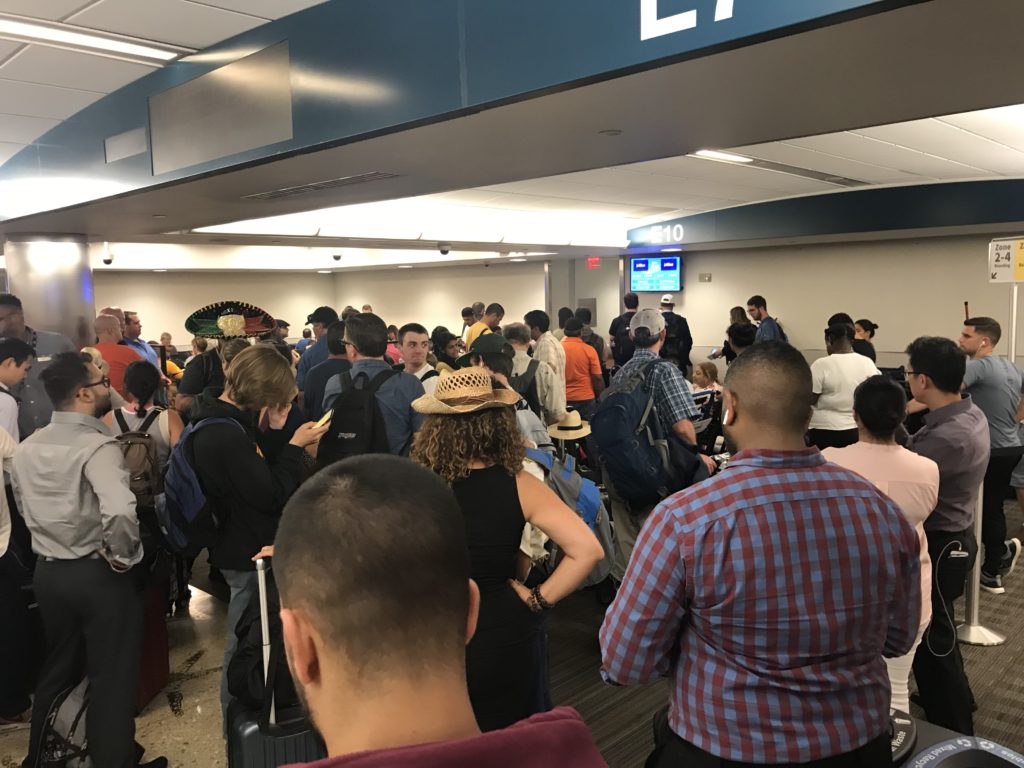
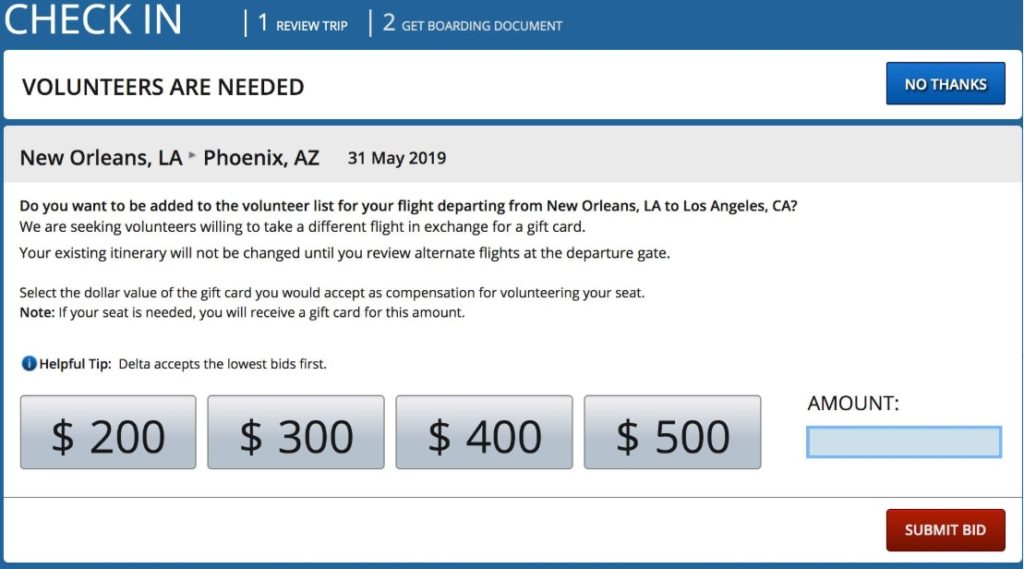
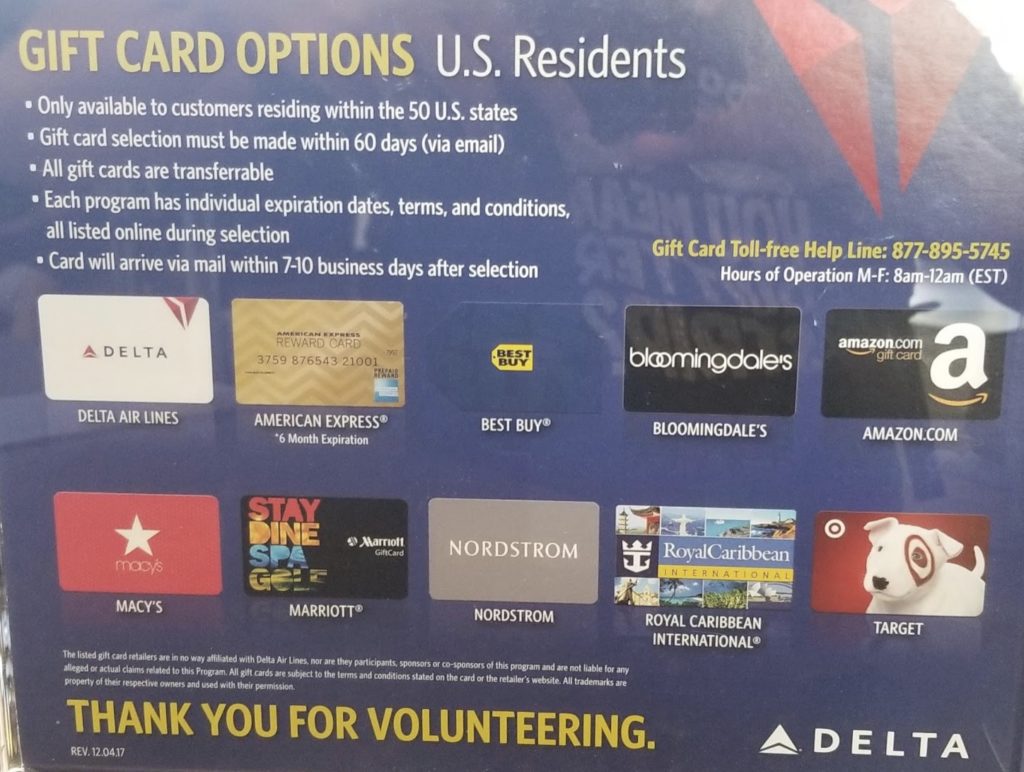
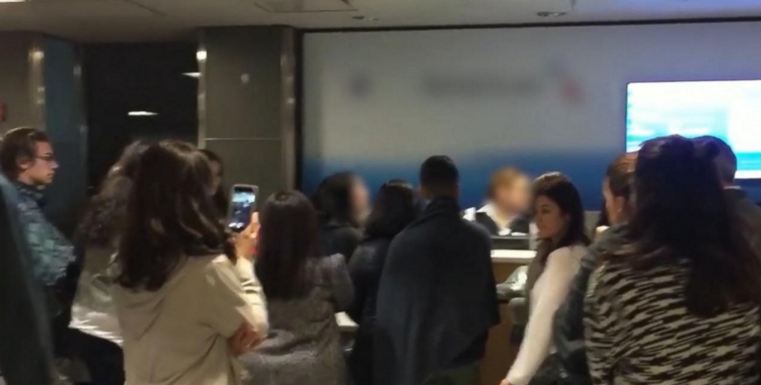
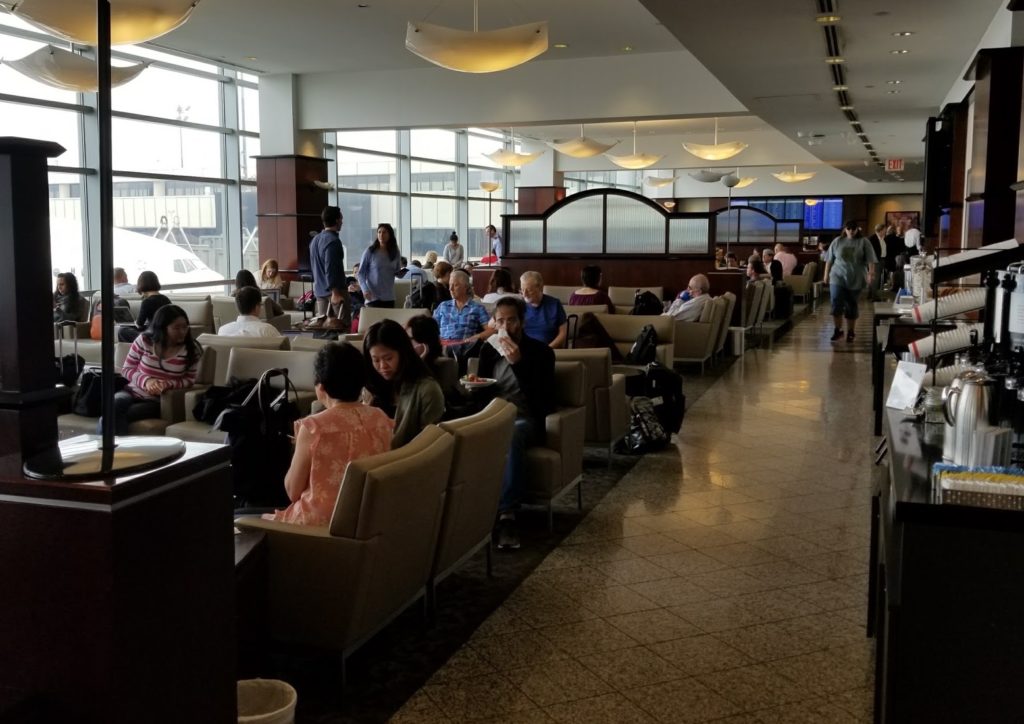
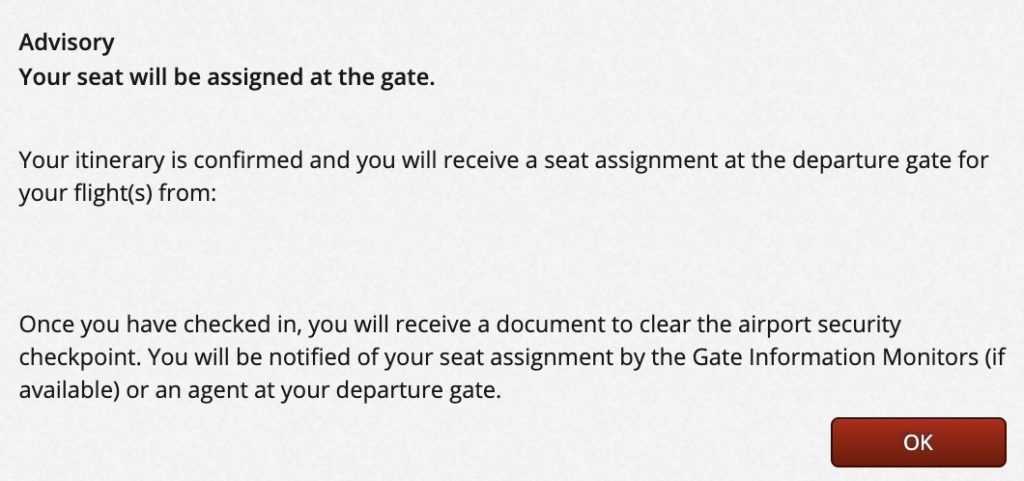

 Dan Miller travels with his wife and 6 (SIX!) children. He loves to help families travel for free / cheap, especially larger families. If you are looking for help, drop him an email at
Dan Miller travels with his wife and 6 (SIX!) children. He loves to help families travel for free / cheap, especially larger families. If you are looking for help, drop him an email at 
I disagree. I will always accept the offer and manually put in $1000 or the highest offered bid (whichever is higher). This at least gets you on the list so the GA knows that you are willing to vol and you don’t have to be at the gate at the second it opens. I’ve only had 1 time that they actually referenced what was offered on the checkin screen. Also in my experience volunteers have only actually been needed less than 10% of the time.
My daddy taught me two things. Corporations are always right and jesus loves all. I will always vote for my representative that has a mistress who got pregnant and he tried get an abortion for because he goes to church with his family on every Sunday and makes sure everyone sees that he does.
My representative always votes for corporations because they know best. Sure would be nice if I had some healthcare and a place to live but I don’t want to sound too demanding. I have the best spot under the bridge after all and once in a while I can lay with my cousin when she comes to visit from her bridge there yonder.
Jesus saves all and delta knows best.
But I think we are agreeing. You made your own offer, and then you can decide at the airport. If they give you $1000 in response to your email, go to the airport knowing that they will be willing to add something to that at the gate. That way you’re on the list *and* making a better deal for yourself.
I think you could “free-text” your own bid, and by any standards $500-$750 for a short haul domestic, $1000 for a longer domestic and $1500-$2000 for an international seems like reasonable compensation.
“Reasonable” is great, but I think you’re falling into tactic #3: negotiating with yourself. It’s good to know what you’re willing to accept, but that doesn’t mean that you should take the first offer and stop, even if it matches what you think is reasonable. Have your goal point and try to get more from there.
Believe me, this is my worst personal problem with negotiation, and why I let my wife argue pricing with vendors when we travel.
The trick is don’t take voluntary bump less than involuntary bump. Makes no sense. And finally this is not your business. You are out on a trip, not to get bump compensation. You should negotiate with that in mind. If they want to bump you they bloody hell pay a lot. Else you will go on your way as you always intended. Don’t get distracted from your primary goal. It is not worth it. So don’t even think unless they offer 1.5 involuntary bump and negotiate from there. Anything less is not worth it. So even if you are no better deal maker than our president you will still be 1.5 times better than getting involuntary bumped.
Yeah – i took a $1000 Amex GC to get bumped from Delta
My assumption is that if you are considering taking bump offers, your schedule is free enough to accept most reasonable delays. If you’re on a tight schedule, like for work or a hotel that will cancel your entire vacation, hopefully you’re not playing bump roulette as the potential losses are far higher than your compensation.
I like your 1.5x standard. It’s a good thing to keep in mind.
I was recently in Aspen when I got an emailed bump offer from United. My hotel was reserved with points already and the skiing was amazing, the sun shining and the slopes empty — and I had an IKON pass so another ski day was “free”– so instead of agreeing to take the emailed offer and packing up all the ski stuff and crossing fingers at the airport and then unpacking it all if I did get “selected”, I called United and offered up my seat for no payment, but no change fees either. It was worth it to me to stay and ski another awesome day for free…!
Now *that’s* pretty hard to beat at any dollar amount. 🙂
Very well written, and well researched.
Thank you.